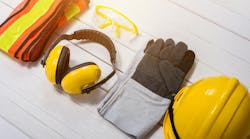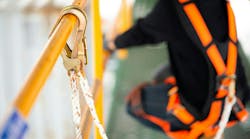Spills happen, even when people are careful. A key aspect of safe and effective spill response is reporting the spill. Even a small one. Report any spill promptly, not as an afterthought just before going home.
Yet, it isn’t always best to report the spill as your first action. For example, consider a machine spill caused by a sudden gasket blowout. Can you quickly shut down the machine to prevent further damage? Or somebody knocks over the can of waste oil temporarily left by maintenance mechanics. Can you quickly toss some pigs between it and the floor drain?
Notice the word “quickly.” You don’t want to delay reporting so you can clean or contain. And you may not have the equipment or training to do that correctly. Also, assess the danger. If you cannot readily verify the absence of personal danger, forget quick efforts and just get out of there. Warn others in the area, then report the spill.




